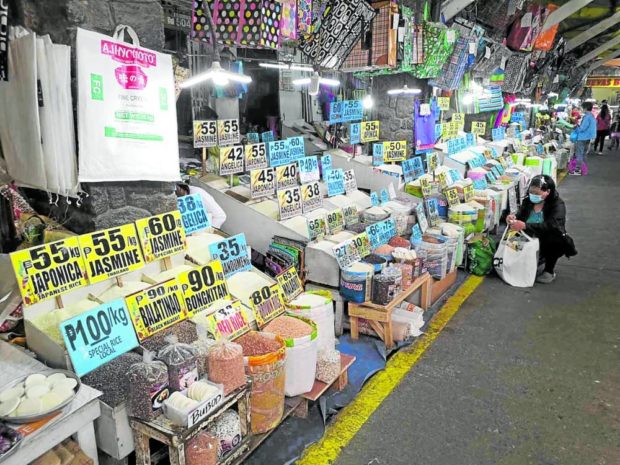
MISSING INCOME A growing amount of evidence on padded receipts and illegal transactions at the Baguio City public market by city collectors has surfaced to reveal a scam that has been victimizing unsuspecting vendors in the last 10 years. EV ESPIRITU
MANILA, Philippines — The country’s supply of rice will likely be stable for the remainder of 2022, but the Federation of Free Farmers (FFF) urged the government to quickly implement measures to boost agricultural production and anticipate external factors that may affect food supply and prices in 2023.
In a message to the Inquirer, Raul Montemayor, national manager of FFF, said “we will end 2022 with still around 60 days’ supply,” referring to the national rice buffer stock, which amounts to around two million metric tons every year.
Under the rice tariffication law, the national rice buffer stock can only be bought from local farmers, but under the Duterte administration, the National Food Administration was allocated only enough funds for 300,000 MT, good only for a week.
Aside from the measly buffer stock, external factors, such as the depreciation of the peso, India’s imposition of a rice export tax to control inflation and increased demand from other countries, may also affect the country’s rice stocks.
Montemayor’s brother, former Agriculture Secretary Leonardo Montemayor, who is FFF chair, conceded that there is usually a carryover stock that lasts until just before the March harvest.
The Department of Agriculture said earlier that the prices of food items, specifically rice and vegetables, might jack up by 15 to 20 percent as the rice-producing region of Central Luzon was hit hard by Supertyphoon “Karding” (See related story on Page A6).
It affected the livelihood of 103,552 farmers and fishers in the regions of Cordillera, Ilocos, Cagayan Valley, Central Luzon, Calabarzon, Bicol and Western Visayas.
With the typhoon’s damage to the essential agriculture sector nearing the P3 billion mark, FFF national president Dioscoro Granada asked the government to expedite the release of financial assistance to affected agricultural producers.
The FFF estimated that around P7.7 billion from excess rice tariff collections in 2020 have been made available as income subsidies for last year alone under the Rice Farmers Financial Assistance Program.
Of which, the Development Bank of the Philippines has met its distribution target of about P5.6 billion for approximately 1 million farmers.
“In contrast, the Land Bank [of the Philippines] has rolled out a mere 5 percent of its P2.1 billion allocation for its assigned 400,000 farmers,” Granada said.
Anacleto Mejares, secretary general of FFF, also pressed the Marcos administration to eliminate the “kinks” in the ongoing distribution of P500 million worth of fuel subsidies for 69,000 fishers and 69,000 corn farmers nationwide. INQ